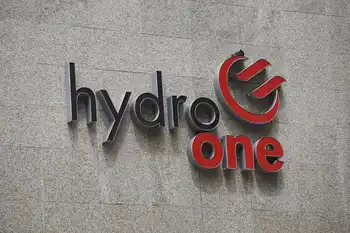Hydro One wants to spend another $6-million to redesign bills

Protective Relay Training - Basic
Our customized live online or in‑person group training can be delivered to your staff at your location.

- Live Online
- 12 hours Instructor-led
- Group Training Available
Hydro One Bill Redesign Spending sparks debate over Ontario Energy Board regulation, rate applications, privatization, and digital billing upgrades, as surveys cite confusing invoices under the Fair Hydro Plan for residential, commercial, and industrial customers.
Key Points
$15M project to simplify Hydro One bills, upgrade systems, and improve digital billing for commercial customers.
✅ $9M spent; $6M proposed for C&I and large-account changes.
✅ OEB to rule amid rate application and privatization scrutiny.
✅ Survey: 40% of customers struggled to understand bills.
Ontario's largest and recently privatized electricity utility has spent $9-million to redesign bills and is proposing to spend an additional $6-million on the project.
Hydro One has come under fire for spending since the Liberal government sold more than half of the company, notably for its CEO's $4.5-million pay.
Now, the NDP is raising concerns with the $15-million bill redesign expense contained in a rate application from the formerly public utility.
"I don't think the problem we face is a bill that people can't understand, I think the problem is rates that are too high," said energy critic Peter Tabuns. "Fifteen million dollars seems awfully expensive to me."
But Hydro One says a 2016 survey of its customers indicated about 40 per cent had trouble understanding their bills.
Ferio Pugliese, the company's executive vice-president of customer care and corporate affairs, said the redesign was aimed at giving customers a simpler bill.
"The new format is a format that when tested and put in front of our customers has been designed to give customers the four or five salient items they want to see on their bill," he said.
About $9-million has already gone into redesigning bills, mostly for residential customers, Pugliese said. Cosmetic changes to bills account for about 25 per cent of the cost, with the rest of the money going toward updating information systems and improving digital billing platforms, he said.
The additional $6-million Hydro One is looking to spend would go toward bill changes mostly for its commercial, industrial and large distribution account customers.
Energy Minister Glenn Thibeault noted in a statement that the Ontario Energy Board has yet to decide on the expense, but he suggested he sees the bill redesign as necessary alongside legislation to lower electricity rates introduced by the province.
"With Ontarians wanting clearer bills that are easier to understand, Hydro One's bill redesign project is a necessary improvement that will help customers," he wrote.
"Reductions from the Fair Hydro Plan (the government's 25 per cent cut to bills last year) are important information for both households and businesses, and it's our job to provide clear, helpful answers whenever possible."
The OEB recently ordered Hydro One to lower a rate increase it had been seeking for this year to 0.2 per cent down from 4.8 per cent.
The regulator also rejected a Hydro One proposal to give shareholders all of the tax savings generated by the IPO in 2015 when the Liberal government first began partially privatizing the utility. The OEB instead mandated shareholders receive 62 per cent of the savings while ratepayers receive the remaining 38 per cent.





_1557567480.webp)





